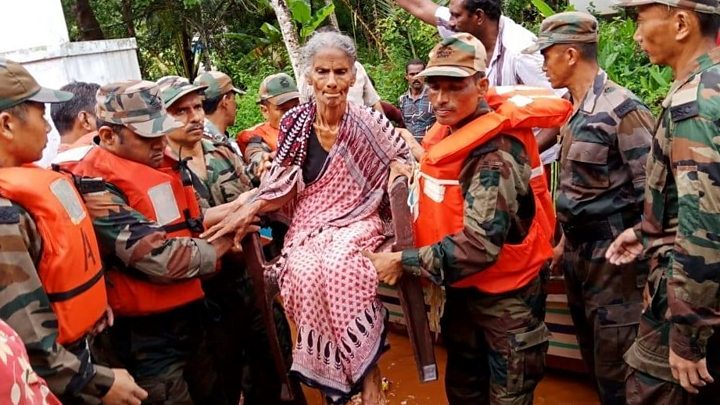
At least 324 people have been killed in flooding in the southern Indian state of Kerala in what local officials say is the worst flooding in 100 years.
India's monsoon season started in June, but the death toll in Kerala has soared in the past 24 hours.
Rescuers are battling torrential rains to save residents, with more than 200,000 people left homeless in camps.
Indian Prime Minister Narendra Modi has arrived in the state to see the devastation for himself.
The Kerala government said many of those who died had been crushed under debris caused by landslides.
With more rains predicted and a red alert in place, Kerala's main airport is expected to remain shut until 26 August.
Hundreds of troops have been deployed to rescue those caught up in the flooding.
Helicopters have been airlifting people marooned by the flooding to safety, with photographs and footage emerging from the area showing elderly people and children being rescued.
- India floods: 'I'll have nothing if I leave my house'
- Saving flood water to get through the droughts
More than 300 boats are also involved in rescue attempts, AFP news agency reports.
The government has urged people not to ignore evacuation orders, and is distributing food to tens of thousands of people who have fled to higher ground.
The Indian home ministry says more than 930 people have now died across India since the country's monsoon season began.
How bad is the Kerala flooding?
The region's chief minister, Pinarayi Vijayan, has described the flooding as the worst the state has seen in a century.
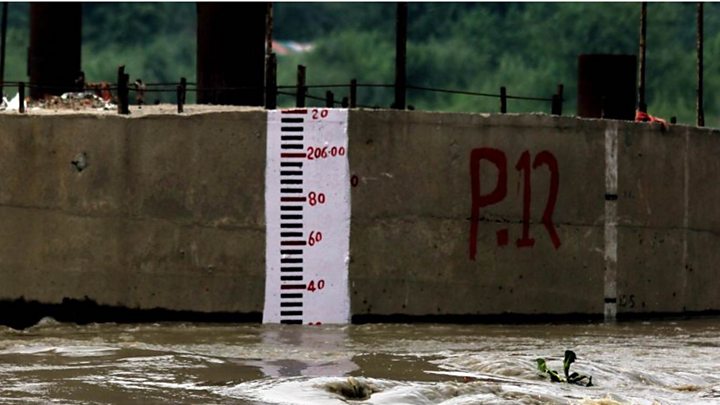
"We're witnessing something that has never happened before in the history of Kerala," he told reporters.
Mr Vijayan said more than 223,000 people were now living in more than 1,500 emergency relief camps set up in the area.
Parts of Kerala's commercial capital, Cochin, are underwater, snarling up roads and leaving railways across the state impassable.
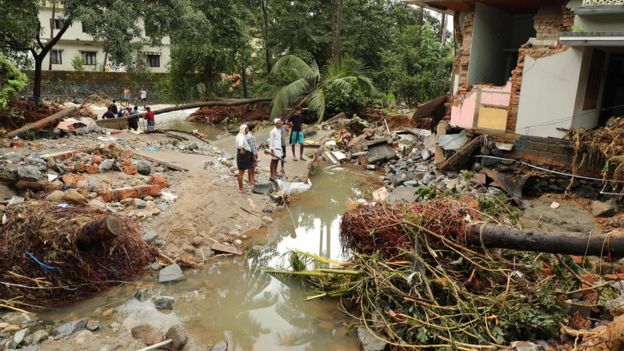 AFP/GETTY
AFP/GETTY
The state's airport is a hub for domestic and overseas tourists, so its closure is likely to cause major disruption.
Some local plantations are reported to have been inundated by water, endangering the local rubber, tea, coffee and spice industries.
Schools in all 14 districts of Kerala have been closed and some districts have banned tourists, citing safety concerns.
What is the government doing?
Prime Minister Modi arrived in the region on Friday evening, Indian media reported, and is due to see the worst affected areas from the air on Saturday.
The country's home minister has also offered his support.

Anil Vasudevan, the head of the Kerala health disaster response wing, has said they are prepared to help victims and are setting arrangements in place to deal with the potential risks of water-borne diseases when the flooding recedes.
Why is the situation so bad?
It is normal for Kerala to get some of the country's highest rainfall during monsoon season, but the India Meteorological Department said it had been hit with 37% more than usual because of a spell of low pressure over the region.
Further downpours are forecast for the weekend, leading many to fear the situation may get worse.
Environmental scientists are also blaming deforestation, especially the failure to protect ecologically fragile mountain ranges in the area, local media report.
Mr Vijayan, the region's chief minister, has said the situation in Kerala has been made worse by neighbouring governments.
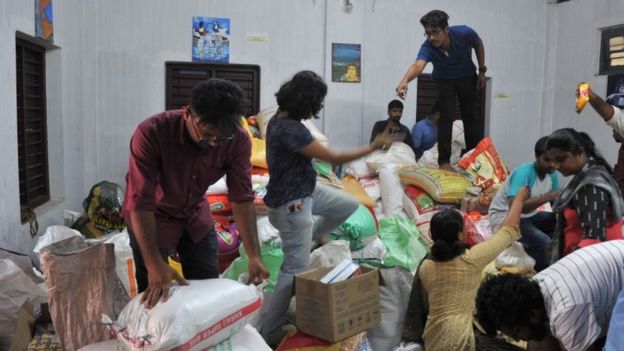 AFP
AFP
Earlier this week, he and his counterpart in Tamil Nadu entered a public spat over the release of water from a dam.
Kerala has 41 rivers flowing into the Arabian Sea, and 80 of its dams are now said to be open after being overwhelmed.
"Almost all dams are now opened. Most of our water treatment plants are submerged. Motors are damaged," Mr Vjayan said.
'Neck-deep water'
BBC Tamil's Pramila Krishnan spoke to several people who had escaped the flooding in Cochin.
Krishna Jayan, 58, said she was at home sleeping when her friend woke her up.
"I opened the door and water gushed in," she said. "When we stepped into the street, we were neck-deep in water."
She said locals had tied ropes along the streets to help people walk through the water, allowing her and her friend to reach a bus to escape.
Another resident, 33-year-old Shabbir Saheel, said he had to carry his two-year-old daughter on his shoulders through the flooded streets to safety.
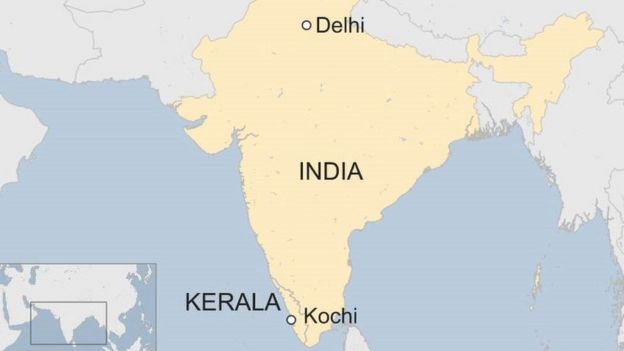
Are you in the area? Have you been affected by the floods? If safe to do so, please email haveyoursay@bbc.co.uk with your experiences.
Please include a contact number if you are willing to speak to a BBC journalist. You can also contact us in the following ways:
- WhatsApp: +44 7555 173285
- Send pictures/video to yourpics@bbc.co.uk
- Or Upload your pictures/video here
- Tweet: @BBC_HaveYourSay
- Send an SMS or MMS to 61124 (UK) or +44 7624 800 100 (international)
- Please read our terms & conditions and privacy policy
Or use the form below
India
India mourns former PM AB Vajpayee
- 17 August 2018
- India
Rescue operation under way in India monsoon
- 17 August 2018
- Asia
Atal Behari Vajpayee: A mercurial moderate
- 16 August 2018
- India

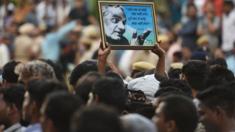
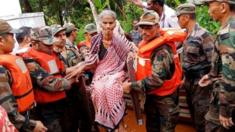
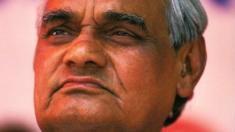

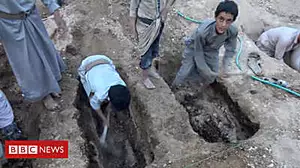

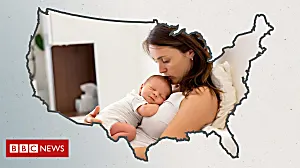

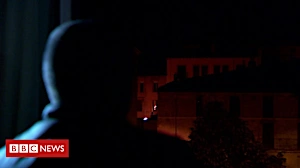

Read latest state news headlines and top Rajya samachar in Hindi from all across India. Stay updated with MNewsindia for Indian States current affairs, Indian States news, Indian States headlines. State News Samachar | राज्यों की ताजा खबरें
ReplyDelete